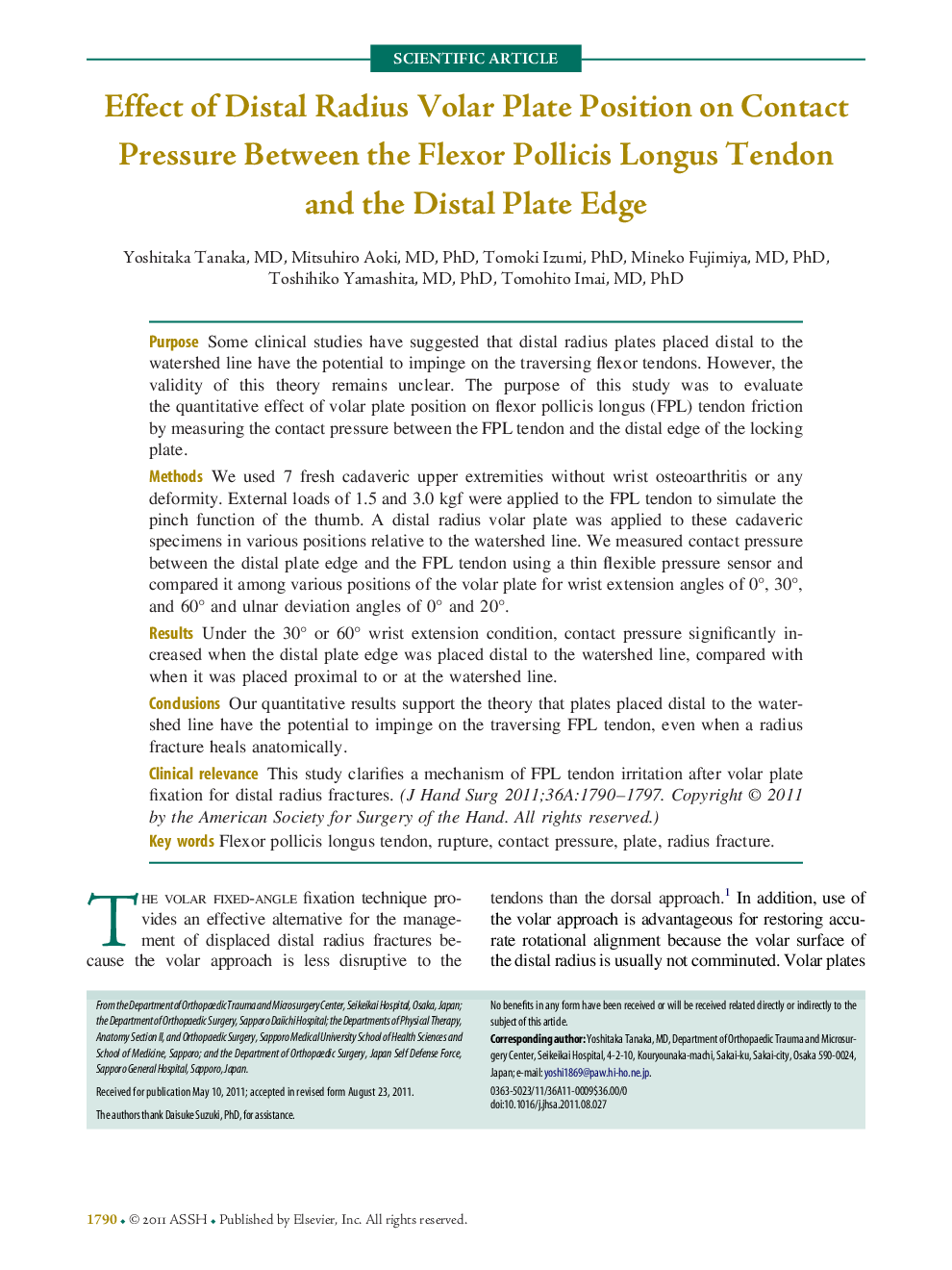| Article ID | Journal | Published Year | Pages | File Type |
|---|---|---|---|---|
| 4070113 | The Journal of Hand Surgery | 2011 | 8 Pages |
PurposeSome clinical studies have suggested that distal radius plates placed distal to the watershed line have the potential to impinge on the traversing flexor tendons. However, the validity of this theory remains unclear. The purpose of this study was to evaluate the quantitative effect of volar plate position on flexor pollicis longus (FPL) tendon friction by measuring the contact pressure between the FPL tendon and the distal edge of the locking plate.MethodsWe used 7 fresh cadaveric upper extremities without wrist osteoarthritis or any deformity. External loads of 1.5 and 3.0 kgf were applied to the FPL tendon to simulate the pinch function of the thumb. A distal radius volar plate was applied to these cadaveric specimens in various positions relative to the watershed line. We measured contact pressure between the distal plate edge and the FPL tendon using a thin flexible pressure sensor and compared it among various positions of the volar plate for wrist extension angles of 0°, 30°, and 60° and ulnar deviation angles of 0° and 20°.ResultsUnder the 30° or 60° wrist extension condition, contact pressure significantly increased when the distal plate edge was placed distal to the watershed line, compared with when it was placed proximal to or at the watershed line.ConclusionsOur quantitative results support the theory that plates placed distal to the watershed line have the potential to impinge on the traversing FPL tendon, even when a radius fracture heals anatomically.Clinical relevanceThis study clarifies a mechanism of FPL tendon irritation after volar plate fixation for distal radius fractures.
